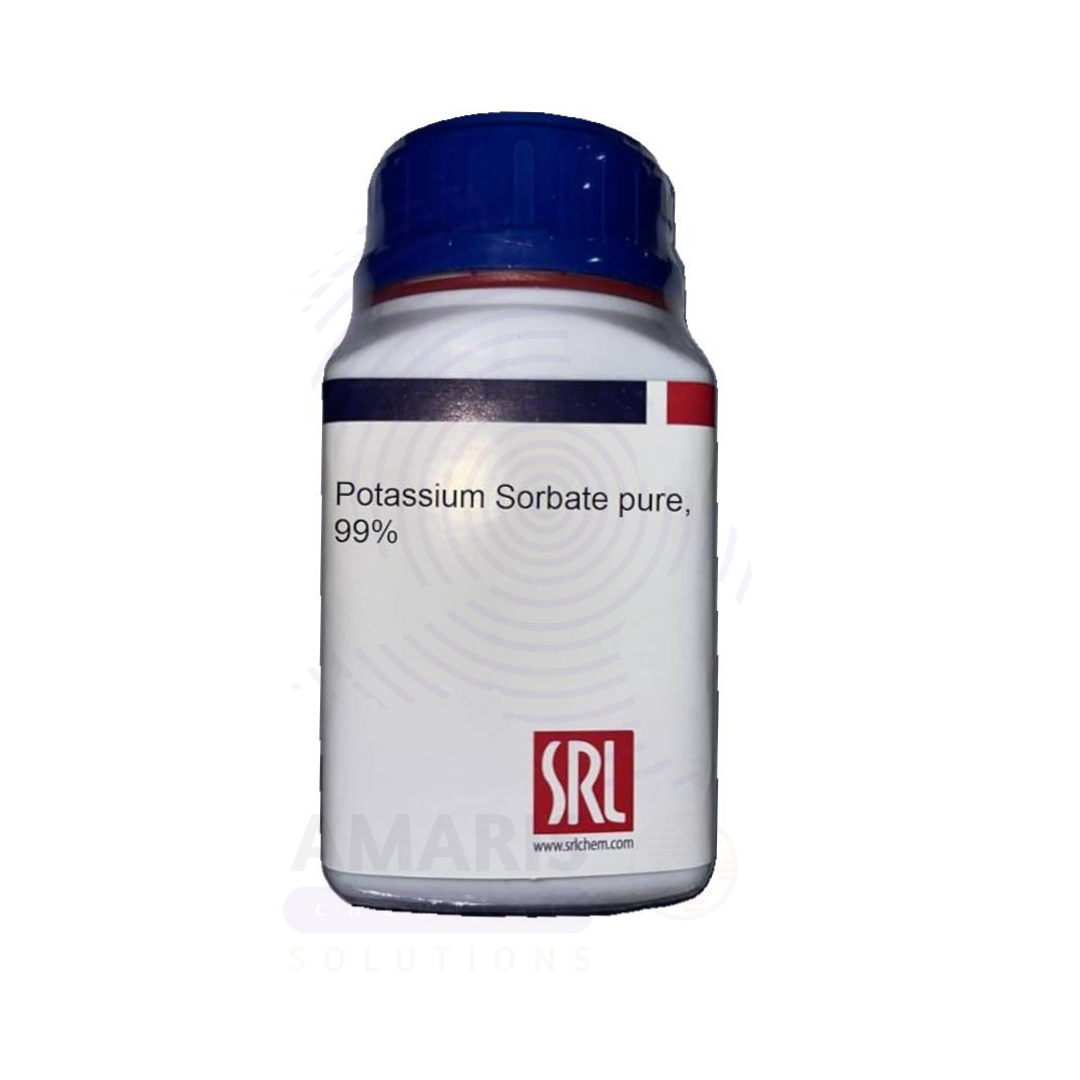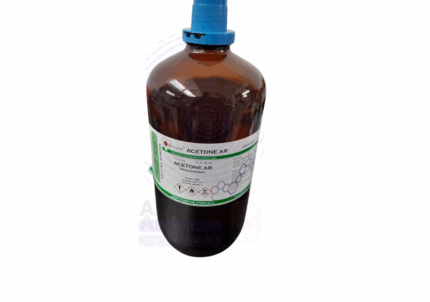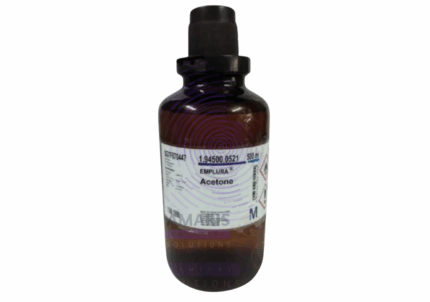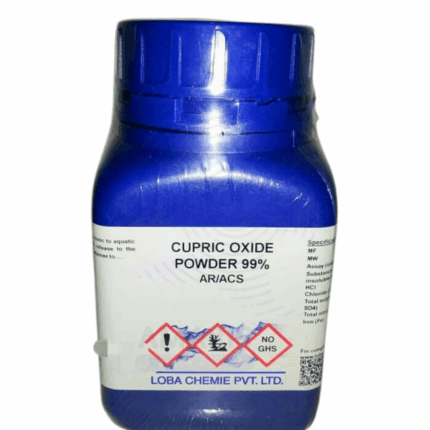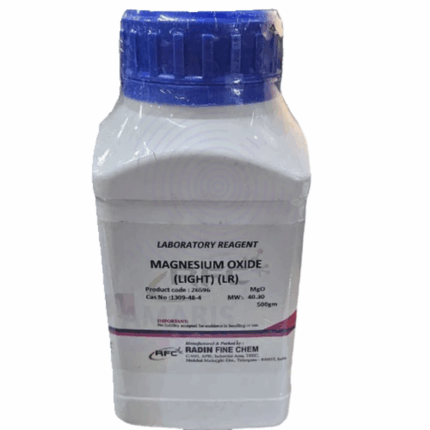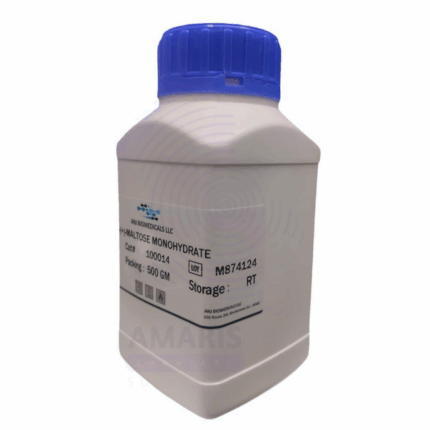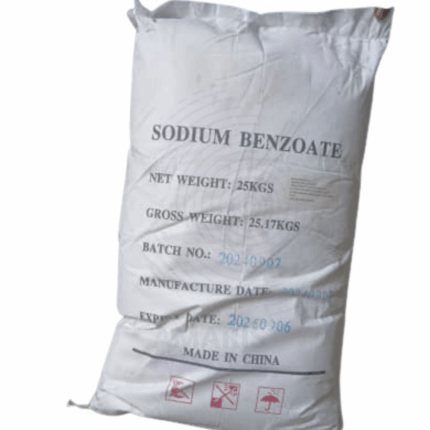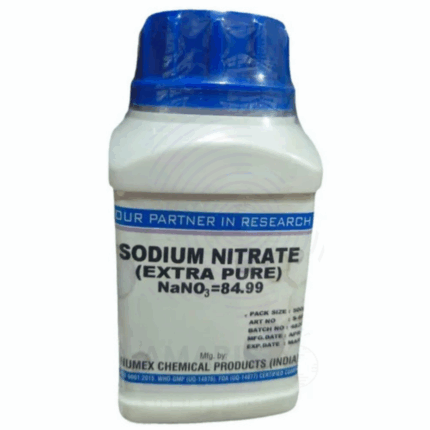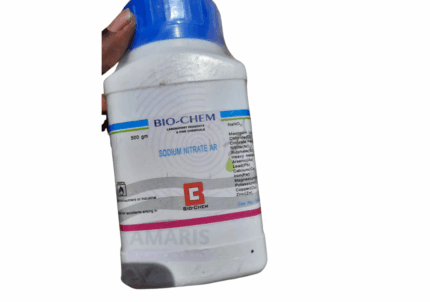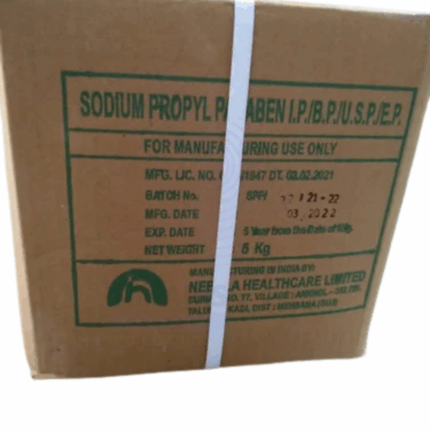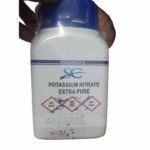
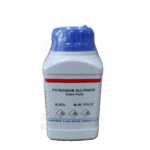
Potassium Sorbate Extra Pure
$ 19.00 Original price was: $ 19.00.$ 18.87Current price is: $ 18.87.
Potassium Sorbate Extra Pure is a high-grade preservative commonly used in laboratory research, food preservation, cosmetics, and pharmaceuticals. Known for its effectiveness in inhibiting the growth of molds, yeasts, and fungi, it is a preferred choice for extending shelf life in various formulations. Its excellent solubility in water and low toxicity make it suitable for sensitive applications where purity is critical. In food and beverage testing or development, it plays a key role in microbial control without altering taste or color. The extra pure designation ensures minimal impurities, supporting accurate and consistent experimental or formulation outcomes.
Potassium Sorbate Extra Pure
PRIMARY USES
- Food Preservative
- Widely used to inhibit mold, yeast, and fungi in foods and beverages.
- Common in baked goods, cheeses, fruit products, wines, and soft drinks.
- Extends shelf life without affecting taste or color.
- Cosmetic and Personal Care Products
- Prevents microbial growth in lotions, creams, shampoos, and makeup.
- Often used as a paraben alternative for preserving water-based formulations.
- Pharmaceutical Applications
- Acts as a stabilizer and preservative in syrups, lozenges, and topical medications.
- Helps prevent microbial contamination in non-sterile products.
SECONDARY USES
- Beverage Industry
- Common in fruit juices, ciders, and wines to control secondary fermentation.
- Ensures product stability during storage and transport.
- Industrial Applications
- Used in polymer production and adhesive formulations where microbial stability is required.
- Ideal for water-based products needing long shelf life.
- Animal Feed
- Occasionally added to animal supplements and feeds to prevent mold during storage.
1. Basic Identification Attributes
- Chemical Name: Potassium Sorbate
- CAS Number: 24634-61-5
- HS Code: 2916.19.00
- Molecular Formula: C₆H₇KO₂
- Synonyms:
- Sorbic acid, potassium salt
- E202 (as food additive)
- Potassium (2E,4E)-hexa-2,4-dienoate
2. Physical & Chemical Properties
- Physical State: Solid (granules or crystalline powder)
- Color & Odor: White to off-white; odorless or faint characteristic odor
- Boiling Point & Melting Point:
- Melting Point: ~270 °C (decomposes)
- Boiling Point: Not applicable (decomposes before boiling)
- Density/Specific Gravity: ~1.363 g/cm³
- Solubility:
- Water: Freely soluble (~67 g/100 mL at 20 °C)
- Slightly soluble in alcohol
- pH Level: ~7–10.5 (1% aqueous solution)
- Vapor Pressure & Volatility: Negligible vapor pressure
- Flash Point: Not flammable
- Autoignition Temperature: Not applicable
- Viscosity: Not applicable (solid)
3. Safety & Hazard Attributes
- Hazard Class (GHS Classification):
- Not classified as hazardous under GHS
- Low toxicity
- NFPA Ratings:
- Health: 1
- Flammability: 0
- Reactivity: 0
- Exposure Limits:
- No established OSHA PEL or ACGIH TLV
- Reactivity:
- Stable under normal conditions
- May react with strong oxidizing agents
4. Storage & Handling Attributes
- Storage Conditions:
- Store in a cool, dry, well-ventilated area
- Protect from heat, moisture, and light
- Incompatible Materials:
- Strong oxidizers, strong acids
- Container Type:
- Polyethylene, polypropylene, or amber glass containers
- Shelf Life & Expiration Date:
- Stable for up to 2 years in unopened, sealed packaging
- Special Handling Requirements:
- Use gloves and dust mask when handling bulk quantities
- Minimize dust generation and exposure
5. Regulatory & Compliance Attributes
- Regulatory Status:
- Approved by FDA, EFSA, JECFA as a food preservative
- Listed under REACH, TSCA
- Hazard Symbols (GHS Pictograms):
- None required for most formulations
- Transportation Restrictions:
- Not classified as hazardous for transport
- No UN number
- Waste Disposal Method:
- Dispose of in accordance with local environmental regulations
- Can be incinerated or sent to landfill if uncontaminated
6. Environmental & Health Impact
- Ecotoxicity:
- Low toxicity to aquatic life in typical concentrations
- Persistence in Environment:
- Degrades readily in soil and water
- Carcinogenicity/Mutagenicity:
- Not classified as carcinogenic or mutagenic by IARC, OSHA, or NTP
- Biodegradability:
- Readily biodegradable
SAFETY PRECAUTIONS
Personal Protective Equipment (PPE):
- Lab coat or protective clothing
- Nitrile or latex gloves
- Safety goggles or face shield
- Use in a well-ventilated area or fume hood
Handling:
- Avoid generating dust
- Do not breathe dust or vapors
- Avoid contact with eyes, skin, and clothing
- Wash thoroughly after handling
- Keep away from strong oxidizers and acids
Storage:
- Store in a cool, dry, well-ventilated area
- Keep container tightly closed when not in use
- Protect from moisture and direct sunlight
- Keep away from incompatible materials like oxidizing agents
FIRST AID MEASURES
Inhalation:
- Move person to fresh air
- Keep at rest and in a position comfortable for breathing
- If symptoms develop, get medical advice
Skin Contact:
- Wash skin with soap and water
- Remove contaminated clothing
- Seek medical attention if irritation persists
Eye Contact:
- Rinse thoroughly with water for at least 15 minutes
- Lift eyelids to ensure complete rinsing
- Get medical help if irritation continues
Ingestion:
- Rinse mouth with water
- Do NOT induce vomiting unless directed by medical personnel
- Seek medical advice if feeling unwell
FIRE FIGHTING MEASURES
Flammability:
- Not highly flammable but may burn if involved in fire
Extinguishing Media:
- Use water spray, foam, dry chemical, or CO₂ extinguishers
Hazardous Combustion Products:
- Carbon monoxide (CO), carbon dioxide (CO₂), and other toxic fumes
Firefighter Protection:
- Wear full protective gear and self-contained breathing apparatus (SCBA)
- Use water spray to cool exposed containers


 Preservatives(food)
Preservatives(food) Flavor Enhancers
Flavor Enhancers Acidulants
Acidulants Sweeteners
Sweeteners Antioxidants
Antioxidants Colorants(food)
Colorants(food) Nutraceutical Ingredients (food)
Nutraceutical Ingredients (food) Nutrient Supplements
Nutrient Supplements Emulsifiers
Emulsifiers
 Collectors
Collectors Dust Suppressants
Dust Suppressants Explosives and Blasting Agents
Explosives and Blasting Agents Flocculants and Coagulants
Flocculants and Coagulants Frothers
Frothers Leaching Agents
Leaching Agents pH Modifiers
pH Modifiers Precious Metal Extraction Agents
Precious Metal Extraction Agents
 Antioxidants(plastic)
Antioxidants(plastic) Colorants (Pigments, Dyes)
Colorants (Pigments, Dyes) Fillers and Reinforcements
Fillers and Reinforcements Flame Retardants
Flame Retardants Monomers
Monomers Plasticizers
Plasticizers Polymerization Initiators
Polymerization Initiators Stabilizers (UV, Heat)
Stabilizers (UV, Heat)
 Antifoaming Agents
Antifoaming Agents Chelating Agents
Chelating Agents Coagulants and Flocculants
Coagulants and Flocculants Corrosion Inhibitors
Corrosion Inhibitors Disinfectants and Biocides
Disinfectants and Biocides Oxidizing Agents
Oxidizing Agents pH Adjusters
pH Adjusters Scale Inhibitors( water)
Scale Inhibitors( water)
 Antioxidants(cosmetic)
Antioxidants(cosmetic) Emollients
Emollients Fragrances and Essential Oils
Fragrances and Essential Oils Humectants
Humectants Preservatives
Preservatives Surfactants(cosmetic)
Surfactants(cosmetic) Thickeners
Thickeners UV Filters
UV Filters
 Fertilizers
Fertilizers Soil Conditioners
Soil Conditioners Plant Growth Regulators
Plant Growth Regulators Animal Feed Additives
Animal Feed Additives Biostimulants
Biostimulants Pesticides (Herbicides, Insecticides, Fungicides)
Pesticides (Herbicides, Insecticides, Fungicides)
 Active Pharmaceutical Ingredients (APIs)
Active Pharmaceutical Ingredients (APIs) Excipients
Excipients Solvents(pharmaceutical)
Solvents(pharmaceutical) Antibiotics
Antibiotics Antiseptics and Disinfectants
Antiseptics and Disinfectants Vaccine Adjuvants
Vaccine Adjuvants Nutraceutical Ingredients (pharmaceutical)
Nutraceutical Ingredients (pharmaceutical) Analgesics & Antipyretics
Analgesics & Antipyretics
 Analytical Reagents
Analytical Reagents Solvents(lab)
Solvents(lab) Chromatography Chemicals
Chromatography Chemicals Spectroscopy Reagents
Spectroscopy Reagents microbiology-and-cell-culture-reagents
microbiology-and-cell-culture-reagents Molecular Biology Reagents
Molecular Biology Reagents Biochemical Reagents
Biochemical Reagents Inorganic and Organic Standards
Inorganic and Organic Standards Laboratory Safety Chemicals
Laboratory Safety Chemicals Specialty Laboratory Chemicals(Special Laboratory Equipment)
Specialty Laboratory Chemicals(Special Laboratory Equipment)
 Demulsifiers
Demulsifiers Hydraulic Fracturing Fluids
Hydraulic Fracturing Fluids Scale Inhibitors(oil)
Scale Inhibitors(oil) Surfactants(oil)
Surfactants(oil) Drilling Fluids
Drilling Fluids
 Dyes and Pigments
Dyes and Pigments Bleaching Agents
Bleaching Agents Softening Agents
Softening Agents Finishing Agents
Finishing Agents Antistatic Agents
Antistatic Agents
 Admixtures
Admixtures Waterproofing Agents
Waterproofing Agents Sealants and Adhesives
Sealants and Adhesives Curing Compounds
Curing Compounds Concrete Repair Chemicals
Concrete Repair Chemicals Anti-Corrosion Coatings
Anti-Corrosion Coatings
 Surfactants(cleaning)
Surfactants(cleaning) Builders
Builders Enzymes
Enzymes Solvents (Cleaning)
Solvents (Cleaning) Fragrances
Fragrances
 Electronic Chemicals
Electronic Chemicals Catalysts
Catalysts Lubricants
Lubricants Photographic Chemicals
Photographic Chemicals Refrigerants
Refrigerants Automotive chemicals
Automotive chemicals Pyrotechnic Chemicals
Pyrotechnic Chemicals
 Biodegradable Surfactants
Biodegradable Surfactants Bio-based Solvents
Bio-based Solvents Renewable Polymers
Renewable Polymers Carbon Capture Chemicals
Carbon Capture Chemicals Wastewater Treatment Chemicals
Wastewater Treatment Chemicals
 Pigments
Pigments Solvents(paint)
Solvents(paint) Specialty Coatings
Specialty Coatings Binders/Resins
Binders/Resins Additives
Additives Driers
Driers Anti-Corrosion Agents
Anti-Corrosion Agents Functional Coatings
Functional Coatings Application-Specific Coatings
Application-Specific Coatings
 Fresh Herbs
Fresh Herbs Ground Spices
Ground Spices Whole Spices
Whole Spices Spice Blends
Spice Blends Dried Herbs
Dried Herbs
 Leavening Agents
Leavening Agents Dough Conditioners
Dough Conditioners Flour Treatments
Flour Treatments Fat Replacers
Fat Replacers Decoratives
Decoratives Preservatives(baking)
Preservatives(baking)
 Plasticizers & Softeners
Plasticizers & Softeners Reinforcing Agents
Reinforcing Agents Adhesion Promoters
Adhesion Promoters Vulcanizing Agents
Vulcanizing Agents Antidegradants
Antidegradants Blowing Agents
Blowing Agents Fillers & Extenders
Fillers & Extenders Accelerators & Retarders
Accelerators & Retarders